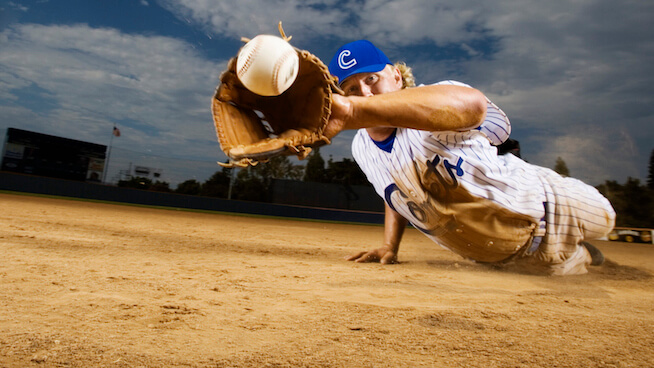
It’s the most American of sports. It’s also the source of over 600,000 play-related injuries, every year. Young players are experiencing injuries at a higher rate than they ever have, but everyone who plays the game needs to know that there are top 5 ways to avoid baseball injuries.
With a little pre-game prep and keeping some key guidelines in mind, those who love to play baseball can protect their bodies. Let’s review.
1. Warm up.
Preparing your body is not an option. It’s crucial, no matter what sport or physical activity you’re talking about. Baseball is no different. The arms and shoulders, especially, need a good warm up to prepare them for the physical stress of throwing (and not just the pitcher – all players).
But your back and hamstrings also need you to give them some love. There’s a lot of waiting around in baseball, but when the action starts, it starts fast. Your body needs to be prepared for cold sprints, extreme catching in the outfield and everything else that’s going to happen out there.
2. Safety gear.
Baseballs are very hard, very rapidly moving objects. That’s why you need to protect your head with a helmet, but it’s not going to help if it doesn’t fit properly.
Catchers are especially vulnerable players, as they’re squatting right behind the batter. They need to be kitted out with all the requisite safety gear, head to toe to protect themselves from balls that can clock up to 90 miles an hour.
Footwear for baseball should be appropriate to the sport and fit properly. They should also have cleats to prevent slipping in the thick of it.
3. Technique.
All physical activities have acknowledged techniques which can help you prevent injury. In baseball, one of the most important is sliding into base properly. Proper sliding technique can save you a world of pain. Training for this is mandatory.
Players should also know that while obstructing a player from sliding may seem like defending their team, it’s extremely dangerous. Both players can be badly hurt when this strategy is used. Winning just isn’t worth it.
4. Teamwork.
Any hint of a possibility that a player has been injured should be immediately communicated to someone who can help. That means everyone playing agrees to have each other’s back. It also means that access to a health professional at game time is good policy.
Even if you’re playing for fun, everyone on the field should model awareness of injuries, do their best to avoid them and watch out for players who do get hurt, despite their best efforts.
5. Back in the game? No.
Players who’ve been hurt on the field should never insist on getting back in the game, unless they exhibit absolutely no symptomatic fallout. Rushing back out there to play again (no matter how noble it may seem) can inflame an injury, leading to it becoming more serious.
Stay on the bench. This isn’t a movie and you’re not Shoeless Joe. Contact us for more information.














